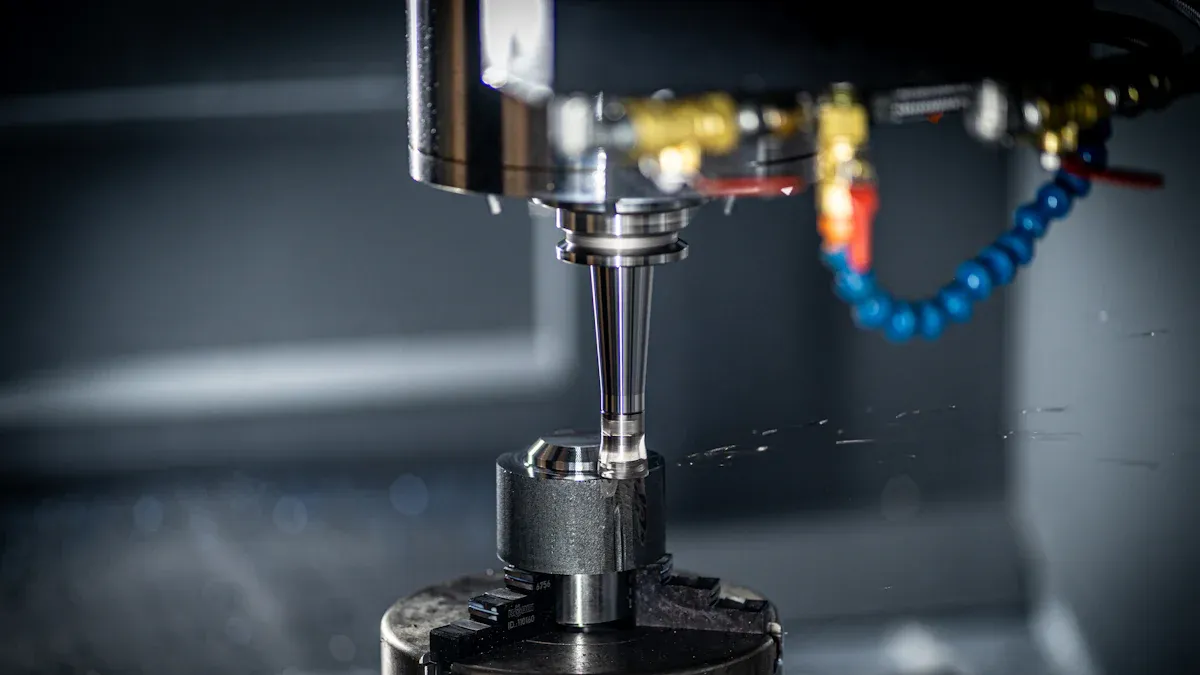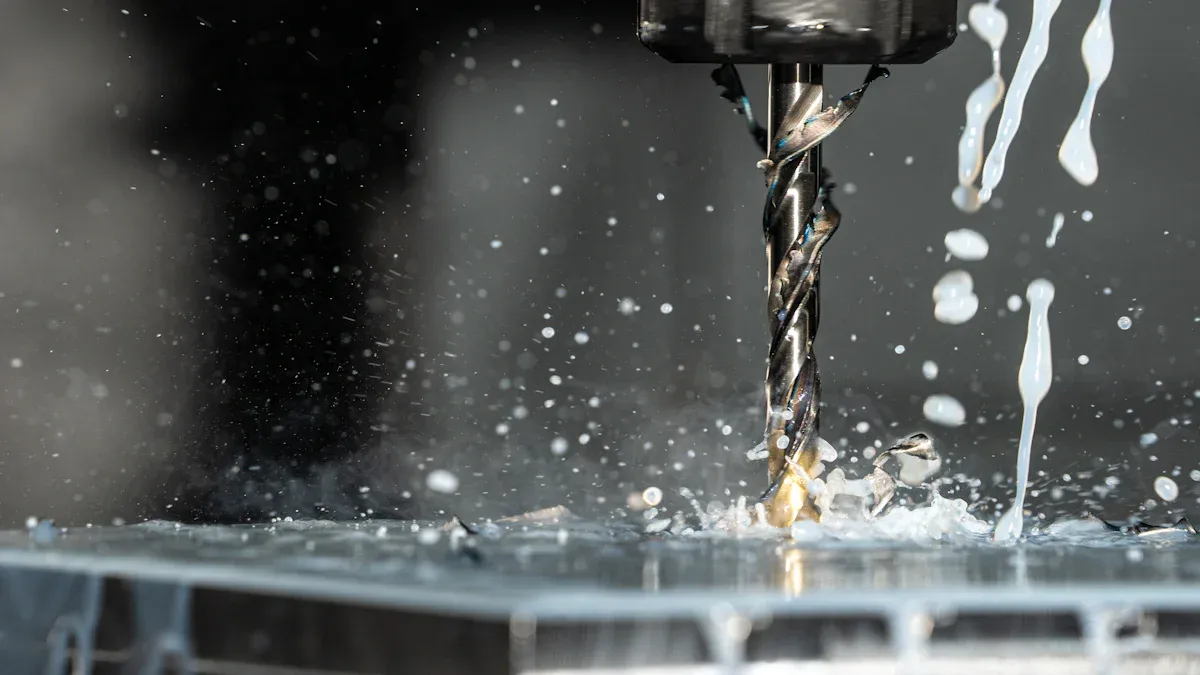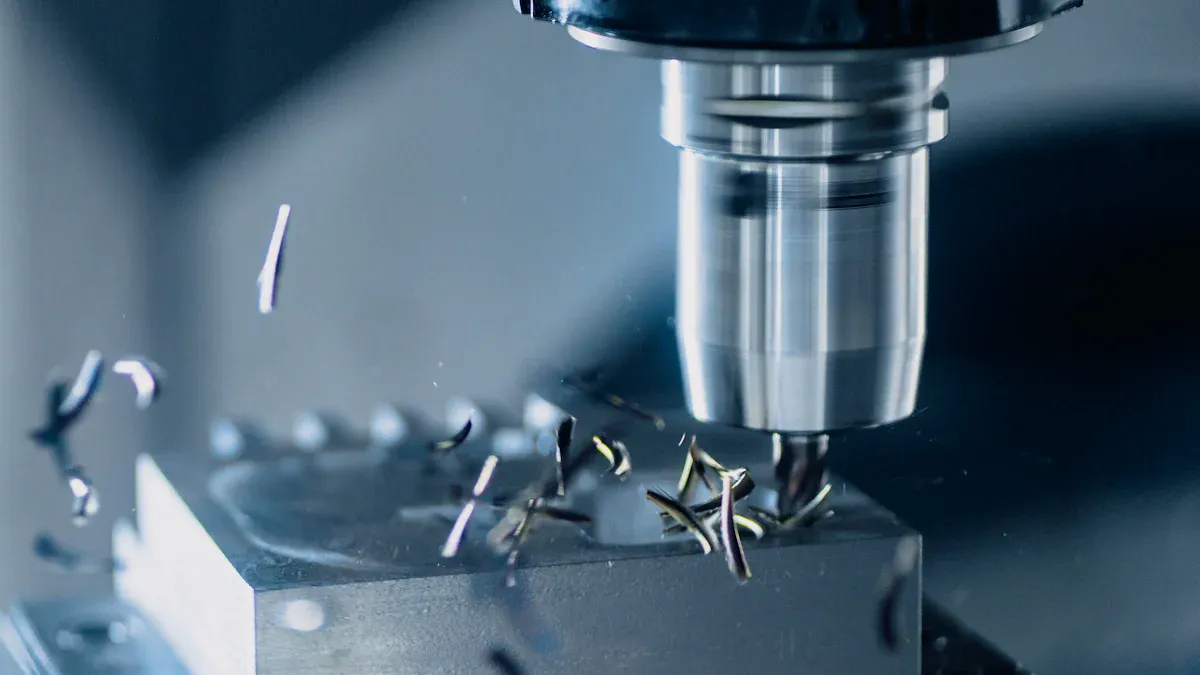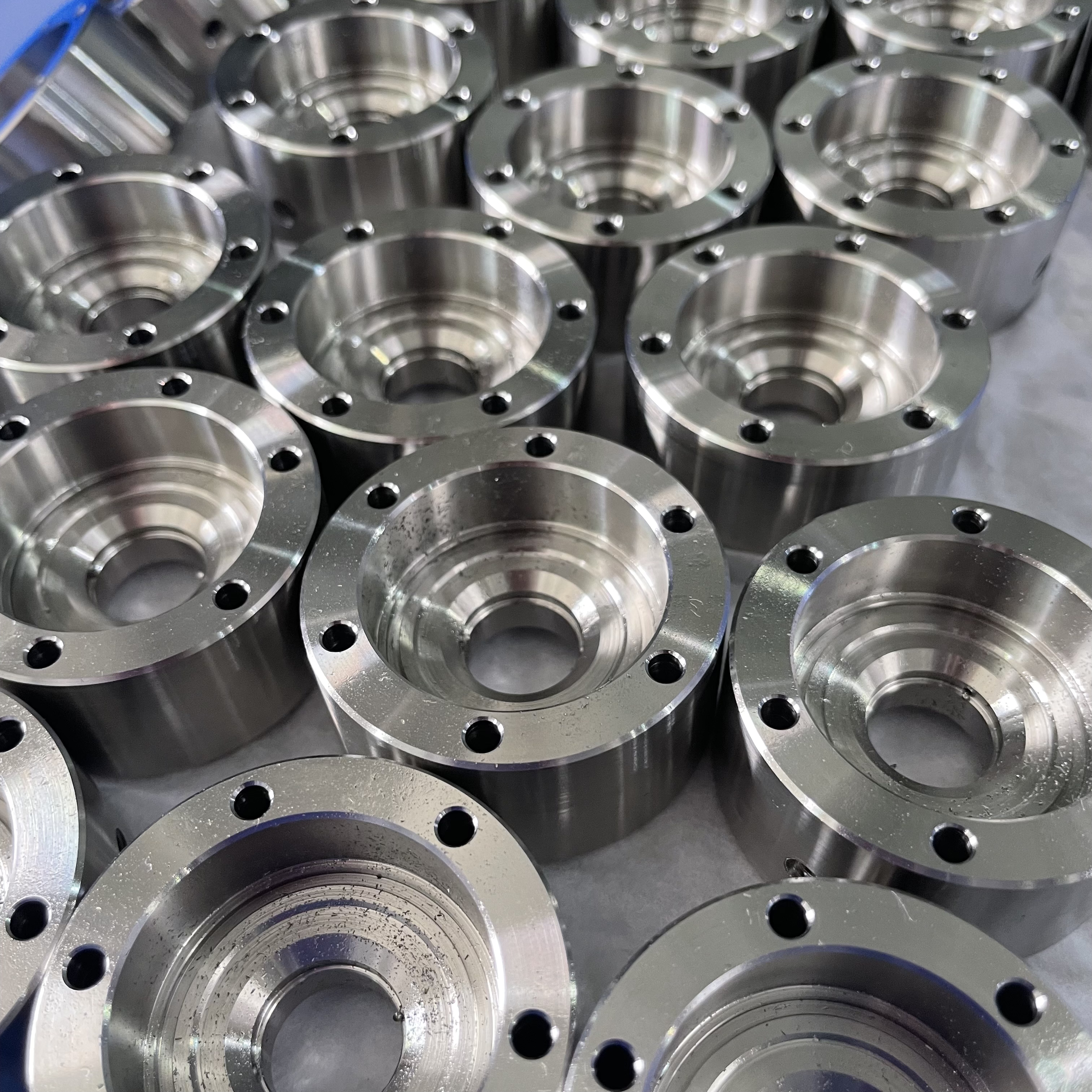The Cost-Effectiveness of CNC Services for Small and Medium-Sized Businesses

CNC Machining helps you save costs by improving precision and reducing waste. Factors like material selection, machine type, and part complexity influence its cost-effectiveness. For example, choosing the right material minimizes expenses, while efficient machine setup reduces time. Modern advancements also make CNC Machining viable for low-volume production, debunking misconceptions about its affordability.
Key Takeaways
CNC machines cut costs by being accurate and wasting less material. This makes them a good option for small and medium businesses.
Using CNC machines saves money on workers and works faster. It helps businesses finish work on time while keeping good quality.
Picking the best CNC company and machine is important. It helps businesses get more value and do well in the future.
Understanding CNC Machining

What Is CNC Machining?
CNC Machining, or Computer Numerical Control Machining, uses computerized systems to control tools and machinery. These machines create precise cuts and shapes from materials like metal, wood, and plastic. You can use CNC systems to produce a wide range of items, such as aerospace parts, automotive components, and even decorative wooden pieces. This versatility makes CNC Machining a valuable tool in modern manufacturing.
CNC machines offer several key functions. They control machine tools, enhance functionality, and provide diagnostic capabilities. These features ensure smooth operations and consistent results. Unlike traditional methods, CNC Machining relies on automation, which reduces human error and improves precision. This technology also allows for continuous operation, making it faster and more efficient than manual processes.
Relevance of CNC Machining for Small and Medium-Sized Businesses
For small and medium-sized businesses, CNC Machining offers significant advantages. It ensures high precision and accuracy, which is essential for producing quality products. Automated systems maintain consistent production quality, even for large orders. You can also benefit from faster production speeds, as CNC machines operate 75 to 300% quicker than manual methods.
CNC Machining reduces labor costs by automating tasks that would otherwise require skilled workers. It also minimizes material waste by optimizing cutting paths. These cost-saving features make CNC Machining an affordable option for businesses with limited budgets. Additionally, the quick setup times and continuous operation of CNC systems allow you to meet tight deadlines without compromising quality.
By adopting CNC Machining, your business can improve efficiency, reduce costs, and compete more effectively in the market.
Cost Components of CNC Machining
Initial Investments
When you consider CNC Machining for your business, the initial investment is one of the most significant cost components. The price of CNC machines varies widely based on their type and capabilities. Here's a breakdown of typical costs:
Type of CNC Machine | Price Range |
|---|---|
Entry-Level and Hobby CNC Machines | $150 - $3,000 |
Small CNC Lathes | ~$5,000 |
Professional CNC Machines | $5,000 - $100,000 |
Industrial Machines | $50,000 - $500,000 |
Entry-level machines are ideal for small-scale operations or prototyping. However, professional and industrial-grade machines offer advanced features and higher precision, making them suitable for larger production volumes. While these machines require a higher upfront cost, they often deliver better long-term value through improved efficiency and reduced waste.
Ongoing Expenses
Beyond the initial purchase, operating CNC machines involves several ongoing expenses. These costs fall into two categories: fixed and variable.
Fixed Costs:
Rent or Lease Payments: $1,000 to $3,000 per month
Insurance Expenses: $500 to $1,500 annually
Software Subscription Fees: $50 to $200 monthly
Variable Costs:
Labor Costs: $15 to $30 per hour
Material Supplies: 30-50% of product costs
Utilities: $200 to $1,000 monthly
CNC Machine Running Costs: $1,000 to $2,500 annually
Maintenance and repairs also contribute to long-term expenses. Regular upkeep ensures your machine operates efficiently and minimizes downtime. Cutting tools, which require periodic replacement, represent another recurring cost. Proper tool selection and maintenance can help you control these expenses and extend the lifespan of your equipment.
Understanding these cost components allows you to budget effectively and maximize the return on your investment in CNC Machining.
Cost-Saving Benefits of CNC Machining
Reducing Material Waste
CNC Machining helps you minimize material waste by leveraging advanced technology. These machines use computer-aided design (CAD) software to program precise cutting paths. This precision reduces production mistakes, saving you money on materials. Automation also eliminates human error, ensuring consistent results. Identical parts can be produced efficiently, reducing waste caused by inconsistencies.
Additionally, CNC machines allow operators to monitor production closely. They can detect deviations and alert you to make immediate adjustments. This proactive approach prevents larger issues and further reduces waste. By optimizing cutting paths and recycling scrap materials, CNC Machining supports sustainable manufacturing practices.
Improving Efficiency and Precision
CNC Machining enhances efficiency and precision by automating complex tasks. These machines perform with accuracy that surpasses manual methods. Statistical comparisons show significant improvements in accuracy, which reduces waste and the need for reworks. Automation also accelerates production timelines, allowing you to meet deadlines more effectively.
The long-term benefits include cost savings from reduced labor and material waste. CNC Machining ensures consistent quality, even for intricate designs. This reliability makes it an excellent choice for businesses aiming to improve productivity and maintain high standards.
Lowering Labor Costs
CNC Machining significantly reduces labor costs by automating the manufacturing process. Automated finishing processes minimize the need for manual post-processing. This optimization saves time and reduces the demand for skilled labor.
By streamlining production, CNC Machining increases efficiency. Reduced setup times and improved cycle times allow for continuous operation. This higher output leads to faster turnaround times, directly contributing to labor cost savings. With fewer errors and higher-quality products, your business can achieve better results with fewer resources.
Maximizing ROI with CNC Machining
Optimizing Machine Usage
To maximize your return on investment, you need to ensure efficient machine usage. Automating processes wherever possible reduces operator intervention and allows for uninterrupted operations. Real-time data monitoring can help you track machine utilization and identify areas for improvement. This approach ensures high-quality production while keeping costs low.
Regular maintenance plays a crucial role in extending the lifespan of CNC machines. A strict maintenance schedule minimizes unexpected breakdowns and reduces downtime. Training your employees to handle basic troubleshooting can further enhance productivity. By combining automation, data monitoring, and maintenance, you can optimize machine usage effectively.
Selecting the Right CNC Provider
Choosing the right CNC provider is essential for achieving long-term success. Look for providers that offer scalability to grow with your business needs. Evaluate their past projects to assess their expertise and technical capabilities. Providers with rapid prototyping capabilities and continuous improvement practices can help you stay competitive.
Other factors to consider include lead times, pricing, and quality assurance. A provider with strong customer service and after-sale support ensures a smooth experience. Effective communication and a location close to your business can also reduce delays. By carefully evaluating these aspects, you can select a provider that aligns with your goals.
Integrating CNC with Existing Systems
Integrating CNC systems into your current manufacturing processes can boost efficiency and precision. Start by assessing your workflows to identify areas for automation. Choose CNC machines that meet your specific production needs and plan the installation process to minimize disruptions.
Software integration is critical for seamless operation. Train your staff to use the new technology effectively and optimize workflows to enhance productivity. These steps ensure that CNC systems work harmoniously with your existing setup. Continuous operation with minimal supervision reduces human error and improves output quality, making your investment worthwhile.
Case Studies and Examples

Real-World Example of Cost Savings
CNC Machining has proven to deliver measurable cost savings for businesses across various industries. For instance, Company A, a precision engineering firm, experienced remarkable improvements after adopting CNC technology. By automating repetitive tasks and optimizing cutting processes, the company reduced lead times by 50% and increased production capacity by 30%. These advancements allowed them to minimize labor costs and material waste, leading to significant financial savings. The enhanced efficiency also improved profitability, showcasing the transformative potential of CNC Machining for small and medium-sized businesses.
Industries such as aerospace, automotive, medical devices, and electronics frequently utilize CNC Machining to achieve similar benefits. The aerospace sector, for example, relies on CNC for crafting precision components essential for aircraft. Automotive manufacturers use it to produce parts efficiently, while medical device companies depend on CNC for high-quality instruments. This versatility highlights how CNC Machining can adapt to diverse needs while maintaining cost-effectiveness.
Hypothetical Scenario for ROI Maximization
Imagine a scenario where you invest in CNC Machining but neglect regular maintenance. Over time, a critical component, such as a ballscrew, begins to wear out. This decline in performance affects part quality and productivity before the failure becomes apparent. Eventually, the ballscrew fails, resulting in costs for replacement, installation, scrapped parts, and unplanned downtime. This situation underscores the importance of proactive maintenance in maximizing ROI.
To avoid such pitfalls, you can evaluate all costs, including maintenance, anticipated performance, and potential downtime. ROI calculators also help estimate the true costs and benefits over time. By planning ahead and addressing maintenance needs promptly, you ensure consistent machine performance and long-term profitability.
Key Considerations for Small and Medium-Sized Businesses
Choosing the Right Machine Specifications
Selecting the correct machine specifications ensures that your CNC Machining investment aligns with your production needs. Start by evaluating the materials you plan to work with, as different machines handle metals, plastics, and wood differently. Consider the size and complexity of the parts you intend to produce. Machines with higher precision and advanced features may cost more but deliver better results for intricate designs.
Pay attention to the machine's speed and power. Faster machines improve productivity, while powerful ones handle tougher materials. Also, assess the software compatibility. Machines with user-friendly software simplify operations and reduce the need for extensive training. By carefully matching machine specifications to your requirements, you can maximize efficiency and minimize unnecessary expenses.
Evaluating Vendor Support
Vendor support plays a critical role in the success of your CNC Machining operations. Reliable vendors offer comprehensive training, ensuring your team can operate the machines effectively. They also provide ongoing technical support to address any issues that arise. Look for vendors with a proven track record of quality assurance and timely delivery.
Consider the availability of spare parts and repair services. Vendors who stock essential components reduce downtime during maintenance. Additionally, evaluate their software update policies. Regular updates keep your machines running smoothly and enhance their capabilities. Strong vendor support ensures a seamless experience and helps you avoid costly disruptions.
Planning for Scalability
Planning for scalability allows your business to grow without significant hurdles. CNC machines enhance productivity by automating processes, enabling faster and more reliable production. Their flexibility lets you adjust for different batch sizes, making them ideal for small businesses.
To scale effectively, choose machines that support quick transitions between tasks. This minimizes downtime and maximizes output. Evaluate your current and future production needs to ensure your equipment can handle increased demand. By planning for scalability, you can adapt to market changes and maintain a competitive edge.
Tip: Regularly review your production processes to identify opportunities for scaling up efficiently.
Future Trends in CNC Machining
Emerging Technologies
The future of CNC Machining is being shaped by groundbreaking technologies that enhance efficiency and precision. Advanced CAD/CAM systems simplify the transition from design to production, reducing errors and saving time. High-performance cutting tools, made from innovative materials, improve durability and enable faster cutting speeds. Cryogenic machining, which uses liquid nitrogen to cool tools, extends their lifespan and ensures consistent performance.
Micromachining is another game-changer, allowing you to produce miniature components with tight tolerances. This technology is particularly valuable in industries like medical devices and electronics, where precision is critical. Sustainability is also gaining traction, with practices such as coolant recycling and energy-efficient machine designs becoming more common.
Automation and robotics are revolutionizing production by increasing speed and reducing human error. IoT integration enables real-time data sharing, predictive maintenance, and remote monitoring, ensuring optimal machine performance. As Abhisek Das from Fictiv notes, "Innovations like these substantially reduce product development times and costs... uncovering solutions that may not cross an engineer’s mind."
Practices Enhancing Cost-Effectiveness
Adopting efficient tooling strategies can significantly reduce costs. By selecting the right tools and optimizing tool paths, you minimize machine time and material waste. Lean manufacturing practices, which focus on continuous improvement, help eliminate inefficiencies and lower expenses over time.
Automation plays a key role in enhancing cost-effectiveness. It reduces labor costs by streamlining production and minimizing manual intervention. This approach not only improves precision but also optimizes cutting paths, contributing to sustainable manufacturing. IoT technologies further enhance productivity by enabling predictive analytics and real-time monitoring, which prevent downtime and improve machine utilization.
By embracing these practices, you can achieve higher efficiency, lower costs, and a more sustainable production process.
CNC Machining offers small and medium-sized businesses several cost-saving opportunities:
Automation reduces labor costs, streamlining production.
Efficient material usage minimizes waste, enhancing sustainability.
Increased productivity enables faster manufacturing, boosting revenue.
To maximize ROI, you should focus on strategic planning. Regular maintenance, employee training, and selecting reliable machines ensure long-term benefits. By understanding total life cycle costs and optimizing machine utilization, you can achieve substantial savings and business growth.
FAQ
What industries benefit the most from CNC Machining?
CNC Machining benefits industries like aerospace, automotive, medical devices, and electronics. It ensures precision, reduces waste, and supports high-quality production for complex components.
How can you reduce CNC Machining costs?
You can reduce costs by optimizing tool paths, maintaining machines regularly, and selecting materials wisely. Automation and efficient workflows also help minimize expenses.
Is CNC Machining suitable for low-volume production?
Yes, CNC Machining works well for low-volume production. Its precision and quick setup times make it cost-effective for small batches or prototypes.
Tip: Always evaluate your production needs before investing in CNC Machining to maximize its benefits.
See Also
Streamlined CNC Machining Solutions for Accurate Production
Investigating CNC Machining Options for High-Precision Production
Comparing CNC and Conventional Manufacturing Across Various Sectors
Understanding the Benefits of Aluminum CNC Machining Solutions
Examining CNC Technology and Precision Engineering in Electronics
About US
Follow Us
Your prototype holds unparalleled significance, and we deeply value its uniqueness. Collaborating with you during the preparation phase for running your prototype or parts is a commitment we gladly embrace. Whether it's a single part or a complex assembly, we are dedicated to selecting the optimal tools and pathways to bring your envisioned product to life.
At Precision Fab CNC Machining, we specialize in producing parts for prototypes, short runs, and high-volume production. Our prototyping machine capabilities extend across metal, plastic, and wood machining, with welding fabrication services available to complement and finalize your prototype if required.
Address
Address: Room320 10F, Building A,Nanshan international building, Dayawan District, Huizhou, Guangdong, 516001 China
Contacts
billy@timaycnc.com

